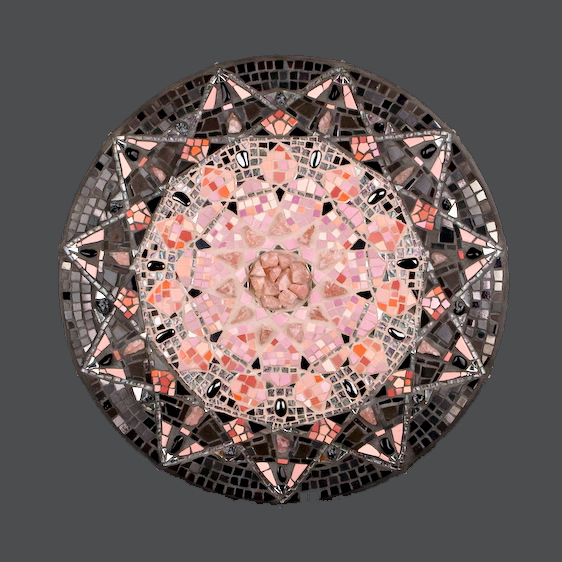WE DECLARE: That all subjects previously used must be swept aside in order to express our whirling life of steel, of pride, of fever and of speed.
— from The Futurist Manifesto, 1909

While strolling in a swank neighborhood in Milan, Italy near the Centro Storico, I spotted this dynamic glass mural in an apartment courtyard. I was drawn in by the radiant central core, a throbbing abstract heart full of love and angst. I immediately recognized it’s mastery. I felt instinctively that it was reminiscent of the early Italian contemporary mosaic movement launched by Futurist, Gino Severini (1883-1966) and his protogé, abstract painter Ricardo Licata (b. 1929). The mosaic is reminiscent of the Futurist’s restless style, the love of speed, movement, noise, and bold color. I suggest the piece was made between 1957 and 1959. Here’s why…


The company of S. Sgorlon Mosaici was based out of Friuli, Italy. That’s where the famous “Spilembergo school” of mosaic educational lineage is based. Mosaici Sgorlon were active in Milan in the 1950’s and executed enormous mosaic and glass projects mainly for churches in Northern Italy. I found a company brochure from 1953 for sale on eBay. The tradition of evolution with mosaic laboratories creates accomplished masters who “graduate” and go on to start their own atelier, such as Luigi Bevilacqua, who trained in the Sgorlon lab in the 50’s. The mosaic trade is historically passed through generations or between brothers. In this case, the ‘S.’ of S. Sgorlon stands for both Silvio and Secondo, which might indicate they were perhaps father and son, or younger and older brothers.
Most exciting for me was following the breadcrumbs to discover that Licata became Severini’s assistant in 1957, at Severini’s École d’Art Italienne in Paris.


This mural measures about 15 ft x 8 ft. and though the work is not dated, Severini was very active in the mosaic movement in the mid-fifties, even hosting a conference on the history of mosaics in Ravenna. As shown in the photos above, the graphic icon would indicate that Licata was the designer, and Sgorlon signature indicates they executed the mosaic. At this time in mosaic history, it was de riguer to have a well-known artist design the “bozetto” or cartoon and work in close collaboration with a respected mosaic laboratory to render the work. Here is Renée Antoine’s French mosaic blog that features many of Licata’s signature mosaics from a 2009 exhibition and the shapes are very similar.
Mysterious mosaics, the story unfolds… Perhaps a wealthy industrialist commissioned the work for his apartment building? What do you think?

If you are reading this post and have any further information, please let me know!
“Nella maggior parte dei casi, le forme piatte, in mosaico, sono un nonsenso. Tutto dipende però dalla formazione intellettuale e spirituale del mosaicista-artista che concepisce il cartone e prende a dirigere l’esecuzione.”
(“In most cases, the flat forms, in mosaic, are nonsense. Everything depends on the intellectual and spiritual development of the mosaicist-artist who conceives the design and directs its execution.”)
— Gino Severini, from “An Introduction on the Lessons of Mosaic” presented at the Academy of Fine Arts in Paris.
Further Information:
Buckland Books – mosaic and tile book purveyor. Carries many books on ancient & modern mosaics.


This is a wonderful mosaic, masterfully done, obviously, in design and craft. Lillian your research is as well made as the mural. Your observations along with scholarship is making you a unique expert and original source.
thank you Siman for the compliment. I’m glad you enjoyed the research.
FABULOUS, Lillian. Very grateful for your thoughtful explorations.
Thanks for sharing the info and beautiful art. I wasn’t looking for inspiration and found it seeing these :~)
What beautiful shots, Lillian. Those colors are inspiringly exuberant.
thanks for your comments! glad you enjoy the post. Luckily i had my phone-The Best camera is the one you have with you!